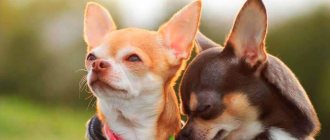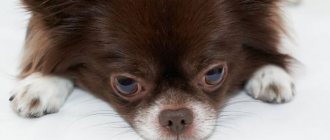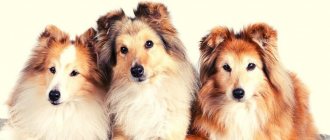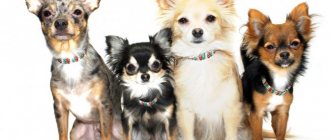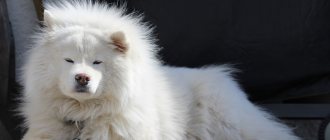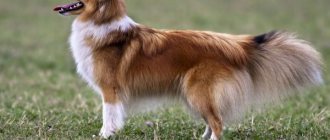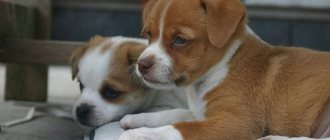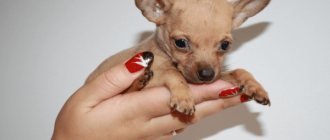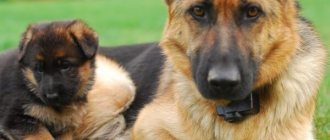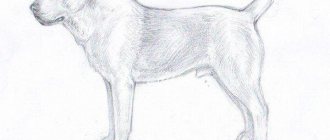Chihuahua puppies are suitable for those who dream of an indoor decorative dog with the disposition of a child. Both at a small age and growing up, these animals remain attached to their owner, like babies. Puppies are in great need of care, attention and control from the owner, especially if there are children or other animals in the house.
From puppy to adult dog
The Chihuahua is one of the smallest and most popular breeds in the world. Already as a puppy, she proves herself to be an excellent companion. You should decide to buy a Chihuahua if you want to constantly hold the dog in your arms and caress it. Puppies, with their size and behavior, can evoke tenderness and tenderness, which is why they are so loved all over the world. Adult dogs are distinguished by the same reverent disposition as kids - they will never get tired of the attention of their owner.
The differences between a baby and an adult dog are in size: newborn Chihuahuas weigh about 100 grams, mature dogs reach 3 kilograms and 20 centimeters at the withers. Chihuahuas grow up to 7 months, then they simply gain weight. Puppies grow fastest in the first month, then growth occurs gradually.
If the puppy does not increase in size (height and weight) within the first four weeks, it should be seen by a doctor.
Despite their petite build, Chihuahuas are round and plump. If the puppy becomes overweight, fat deposits become noticeable, this means that he simply needs additional supplies of nutrients, so he provides himself with warmth. Fatness is not a warning sign. In the first six months of life, dogs of this breed become slimmer. Growing up, they will look fit and graceful. Closer to old age, excess weight can interfere with the dog (unlike adolescence and middle age). The size, weight and height of an adult Chihuahua depend on several conditions:
- Based on the size of both parents.
- From food.
- On the degree of physical activity.
- From heredity.
Pet food
Feeding Chihuahua puppies matters from birth. It is important to pay special attention to it at 3 months, when the animal’s immunity is formed.
After birth, for the first three weeks, the baby eats only breast milk, which supplies it with reserves of proteins, microelements, and fats. For an older puppy, this will no longer be enough, so complementary foods can be introduced from the fourth week.
Lure
Chihuahuas' first supplements come in the form of pea-sized balls of beef or cottage cheese. From a piece of frozen beef, scrape the meat with the tip of a knife and let it warm up at room temperature. It is better to choose low-fat cottage cheese, soft and always fresh.
Every three to four days, portions of complementary foods can be increased, but you should not get too carried away with feeding in order to avoid obesity. By the end of the 4th week of life, babies are already eating cottage cheese, kefir, and meat themselves; a little later, you can teach them to eat from a bowl. It is clear what to feed a Chihuahua puppy at 2 months, but the frequency of feeding during this period should reach 6 times a day, i.e. every 3-4 hours. Then we gradually transfer the baby to three meals a day.
Did you know? The Chihuahua is officially recognized as the smallest dog breed in the world.
Often natural nutrients are not enough for a growing body. To compensate for the lack of vitamins and minerals, it is worth giving preparations with vitamin D and a colloidal solution of calcium oleate. A combination of natural products and nutritional supplements is an ideal complementary feeding option for Chihuahuas.
What to feed a Chihuahua puppy during this period is also important from the point of view that up to 3 months the animal’s taste is formed. At this time, the dog remembers what it looks like and what it tastes like, so if you don’t teach it now, for example, to fruits, then in adulthood it will be impossible to force the Chihuahua to eat them. This breed feels great eating both natural and dry food.
Natural food
Feeding your Chihuahua regular food will not be difficult if you approach this issue carefully and use only high-quality products, since the digestive system of these babies is extremely demanding. You should immediately remove the following from your dog’s diet:
- fatty, spicy, salty dishes;
- lamb, pork;
- pollock, river fish;
- pasta, flour products, white bread;
- sweets;
- sausages;
- potatoes, cabbage, onions.
Important! These products lead to problems with intestinal function, obesity, and in some cases, loss of appetite (if we are talking about sweets, after them dogs become capricious and overeat).
Your Chihuahua puppy will benefit from:
- boiled beef, veal, chicken;
- boiled sea fish fillet (make sure there are no bones);
- vegetables;
- fruits and berries.
No matter how much you would like to pamper your beloved pet only with natural products, it is still advisable to teach him to eat dry food and canned food in case of trips or travel.
Dry food
Dry food is useful to a certain extent for Chihuahuas, as it helps them clean plaque from their teeth, thus preventing tartar. You need to select specialized food, because both the size of the granules and the composition matter. For puppies, it is advisable to soak it, but when the first signs of loss of baby teeth appear, it is already necessary to give only dry complementary foods: it will speed up the change of teeth.
Chihuahuas can be very picky; they may refuse such food if they don’t like the smell, for example. Therefore, choose products from quality brands that use natural flavors.
Important! How to feed a Chihuahua puppy is up to its owner to decide, but it is worth remembering that you cannot skimp on feeding these babies! Whether his diet will be based on dry food or natural products, the quality of the food should not be in doubt, otherwise the puppy’s health will be harmed.
Another advantage of dry food is its composition. If when eating natural food the baby needs additional vitamin supplements, then in the case of dry food they are already included along with useful minerals and antioxidants that strengthen the immune system.
Prices
The cost of a puppy depends on which class it belongs to. In total, there are three classes for Chihuahua dogs:
- The show is great. This includes mini and super-mini Chihuahuas. These are puppies that weigh no more than 800 grams. They are prepared for exhibitions, they are able to receive awards and titles. These are the most expensive and valuable animals; they can cost up to 200 thousand rubles. The lower threshold is 50 thousand rubles. The disadvantage of this category is the poor health of dogs, which is due to their low weight. But they are also considered the most popular among breeders and buyers.
- Brid is great. These are animals weighing more than 1.8 kilograms. They have more disadvantages than their show-class counterparts, but they are also suitable for exhibitions, have good reproductive indicators and heredity. Females are actively used for breeding, which is why girls are more expensive than boys (males of this class are almost never taken for breeding). Such puppies will cost from 40 thousand rubles and more.
- Pet is great. The so-called pets. These are the cheapest puppies, but the most unpopular. They are considered defective among breeders: they are not taken for breeding and are not kept for exhibitions, but the character of the dogs remains unchanged, and if the owner has no ambitions for exhibition prizes and future litter, then such puppies will become an excellent family member. Their price varies from 10 to 20 thousand rubles.
Dog handlers recommend not buying Chihuahuas secondhand, at a pet market, or from unverified breeders - the dogs may turn out to be sick, unvaccinated, may develop poorly and die quite soon. What makes up the price of puppies and why are they so expensive? The fact is that raising a purebred dog is painstaking work. The cost of the baby consists of the price of mating, the cost of feeding the puppy and its mother, and vaccinations. Issuing documents and pedigree is also a separate expense item. You should not lose sight of the fact that puppies of this breed remain the most sought after and popular among decorative breeds, and demand affects pricing.
Chihuahua breed standards require certain proportions; if the body is disproportionate, the animal is removed from the exhibition.
What's next
Now you have Chihuahua puppies, photos on Instagram are drawing rave reviews from other dog owners - but this is the beginning of a difficult period in caring for them. You will need a lot of care and attention not only for the babies, but also for the mother, who is completely exhausted by the process of giving birth to offspring.
Therefore, you should carefully study all authoritative materials regarding the growth of puppies, their diet and other important issues. This period cannot be left to chance - you need to constantly monitor that everything is happening in the right way.
How to buy healthy?
The first tip for purchasing a healthy puppy: buy it in large nurseries, from official breeders, with a pedigree and documents. This step will already guarantee the health of the pet, and if something goes wrong, you can always turn to the breeder for help and clarification. When choosing a puppy, you need to inspect the entire population. Genetic defects can be determined by the relatives and parents of the Chihuahua. Recommendations for buying a healthy pet:
- Don't give in to emotions . Experts do not advise choosing an animal based on color, eye color, or size. Often, inexperienced dog breeders purchase a sick puppy without carefully examining its musculoskeletal system and without identifying developmental defects.
- You need to be vigilant, carefully examine the animal, it is advisable not to take it right away, but check the breed standards and conduct an inspection after some time. Take the puppy to the vet. Genetic diseases or hidden infections can only be detected by a veterinarian.
- During the initial examination, the animal should be free of fleas and ticks. Dogs must be kept clean, and the mother must also be examined. The bedding in a good nursery is always clean, the air in the room is fresh.
- The puppy should not be lethargic or apathetic. They are playful dogs, but puppies sleep a lot, which can be difficult to examine.
- Poor care will manifest itself in bald patches and dull fur.
- The puppy should not have discharge from the eyes, nose, ears, wounds, or mouth ulcers.
- The animal should not limp or have swelling on its legs. This is how problems with joints and bones are expressed.
- A bad sign is bad breath, problem teeth.
- You should pay attention to how the puppy navigates in space . Poor coordination can be a consequence of neurological disorders.
- It is necessary to monitor whether there are any problems with digestion or worms. Puppies go to the toilet every 15 - 20 minutes, you need to wait for this moment.
- An irregular head shape may indicate hydrocephalus and neurological abnormalities.
- In order not to buy a blind or deaf puppy , you need to provoke a reaction - call, clap, call.
- A dog's temperament is ingrained in it from birth. You should choose based on behavior.
If you want to train your dog and teach him tricks, then it is better to choose a puppy who carefully follows the movements of his hands.
Features of care in the first days of life
In life, fragile dogs need especially careful treatment in the first days after birth. They hardly move, they breathe thanks to the help of their mother. During this period, their thermoregulation is just developing, so it is important to warm them near the mother’s body, to examine and weigh them, take them with warm hands and place them only on a heated surface to avoid hypothermia. In some cases, the owner should take special care.
Umbilical cord care
When a puppy is born, it is not advisable to cut the umbilical cord. It would be more correct to cut it off, leaving 2-3 cm for the baby. If you still have to cut it with scissors and blood appears, then the umbilical cord is tied with alcohol-soaked thread. The remainder usually disappears on the 2-3rd day of the baby’s life. If this does not happen, then you need to show the Chihuahua to a veterinarian. Otherwise, when the puppy begins to move independently and steps on the umbilical cord, this can lead to an umbilical hernia.
Trimming the claws
The growth of puppies at this time is very fast, so already on the 10th day of life you should carefully examine the baby’s paws and trim the first claws.
Important! At this time, the claws have already grown enough, so with a careless movement the baby can scratch the mother in the nipple area, where the skin is especially delicate.
The haircut is carried out depending on the claw using a special nail clipper for small dogs or a nail file. If the claw is dark, then it is better to simply file it down. But you can look at the foot with the light one in the light: the pink part of the finger will become visible there, from which you need to retreat 1.5-2 mm and can be cut off.
Driving away worms
Deworming, or simply driving away worms, is an excellent means of prevention, which will allow you to avoid various diseases and infections of the animal in the future. Chihuahua babies are given their first ride at the age of 24 days. Both the veterinarian and the owner can carry out the procedure, but it is better to consult a specialist about which remedy to choose for this. The procedure is carried out in accordance with the instructions for the drug, and the dosage is also determined there.
It is worth repeating the run at 5 weeks, and then at 12 as a preventive measure. For adults it is done once every three to four months.
Effective drugs for fighting worms are: “Prasicide Plus”, “Kaniquantel”, “Ivermectin”, “Milbemax”, “Prasitel”
Vaccination
The next step to improve your dog's health should be its vaccination. Before vaccination, the Chihuahua must be dewormed and completely healthy. The baby is given the first injection against infectious diseases at the 8th week, then at the 12th week a revaccination is given. The next stage awaits puppies at 7-8 months, after a complete change of teeth, and in the future the procedure is carried out once a year.
Important! Rabies vaccination is given to Chihuahuas after changing teeth and only by a specialist from a state veterinary clinic, who puts a note about this in the animal’s passport.
Neonatal: first 2 weeks
At this stage, the most important thing is the nutrition of the newborn puppy. After birth, the baby is completely dependent on the mother. Her milk is the basis of his future health and strength. The mother also helps maintain the baby's optimal body temperature. She often licks the baby to stimulate his excretory processes. The puppy mainly eats and sleeps; when separated from its mother, it begins to whine, crawl and look for her.
Even though the puppy's eyes and ears are initially closed, he can sense smells and respond to touch very well. The intensity of a baby's weight gain depends on his breed: for example, a shepherd puppy grows and becomes rounder faster than a spitz puppy.
The mother is responsible for the growth and development of the puppy in the first months
Growing period: 1–2 years
After a year of life, the development of puppies slows down. The dog becomes sexually mature at approximately 12 months, at which time it can be switched to adult food. She already knows who her “pack” is, distinguishes strangers from familiar people. The dog tries to aggressively show leadership and impose its will on its owner. Stop this behavior and continue training.
Each stage of a puppy’s growth affects its behavior and character development. If you want to raise a physically and mentally healthy dog, participate in its life, love and take care of it.
Walks in the open air
You need to remember: the characteristics of the breed make these dogs curious and brave, so you only need to walk with a Chihuahua on a leash in order to protect them in time from a fight with a dog or cat and other problems. For a Chihuahua, a harness is desirable (a double leash for the neck and body), but it can only be used for adult dogs; in a puppy, it can cause crooked paws. Before you take your baby out for a walk for the first time, you need to make sure that he has received all the necessary vaccinations. It is better to take a walk in warm weather, but not in the heat, so that the dog does not get hurt. Do not allow your dog to eat or even pick up anything from the ground - it may become poisoned.
Weight gain in the second half of a baby's life
From the fourth to the sixth month of life, the child gains approximately 700–600 grams per month. Often, parents of a baby in this age range turn to the pediatrician with concerns related to a noticeable decrease in monthly gains compared to the first months of life. Most often, a decrease in the rate of weight gain is not associated with a deficiency in nutrient intake or changes in the child's health. At this age, the baby begins to move very actively, and it is no longer easy for him to increase weight at the same rate. In the second half of a baby’s life, the weight gain graph has a more gradual rise. Normally, in the age range of 7–9 months of life, the increase on average does not exceed 500 grams per month. And also for the second half of life, a tendency towards a decrease in body weight gain by 50 grams compared to the previous month is very characteristic.
IMPORTANT! The intensive physical and neuropsychic development of a child at this age is determined by large energy expenditures, so weight gain is already significantly less compared to the gain in the first half of life. Breast milk is no longer enough to meet the growing needs of the child’s body, which determines the mandatory introduction of complementary foods into the diet of a baby over 6 months.
In the last three months of the first year of life, every month the baby gains no more than 100–300 grams, which is determined by the natural slowdown in the rate of growth and is normal for this age. When assessing the overall rate of body weight gain in a child in the first year of life, one can focus on the general trend: by four to five months the child should double, and by ten to eleven months triple his birth weight.
Newborn weight table by month
| Norms | Girls | Boys | ||
| Age | Weight, kg | Height, cm | Weight, kg | Height, cm |
| Newborns | 2,8 – 3,8 | 48 – 51 | 3,0 – 4,0 | 48 – 52 |
| 1 month | 3,5 – 4,6 | 51 – 56 | 3,6 – 5,0 | 52 – 57 |
| 2 months | 4,3 – 5,5 | 55 – 59 | 4,5 – 6,0 | 55 – 60 |
| 3 months | 5,3 – 6,4 | 58 – 62 | 5,5 – 6,9 | 59 – 64 |
| 4 months | 5,8 – 7,1 | 60 – 65 | 6,1 – 7,7 | 61 – 66 |
| 5 months | 6,2 – 8,0 | 62 – 67 | 7,0 – 8,4 | 65 – 69 |
| 6 months | 7,0 – 8,8 | 64 – 69 | 7,9 – 8,95 | 66 – 70 |
| 7 months | 7,2 – 9,1 | 65 – 70 | 7,8 – 10,05 | 67 – 72 |
| 8 months | 7,2 – 9,4 | 68 — 72 | 8,2 – 10,4 | 69 — 73 |
| 9 months | 8,1 – 10,8 | 68 – 73 | 8,7 – 11,05 | 70 – 76 |
| 10 months | 8,2 – 10,8 | 69 – 75 | 9,2 – 11,5 | 71 – 77 |
| 11 months | 8,9 – 11,0 | 71 – 76 | 9,3 – 11,5 | 72 — 77 |
| 12 months | 9,0 – 11,3 | 72 — 77 | 9,4 – 11,9 | 73 — 79 |
Who is better?
Girl
Pros of owning a bitch:
- Flexible, easy to learn.
- Controlled matings and breeding are possible.
- Marks less than a male.
- Clean.
Minuses:
- Puppies from uncontrolled matings.
- Regular estrus (prevents participation in exhibitions).
- In terms of appearance, boys take the best places at exhibitions.
Boy
Pros of owning a male dog:
- Will not bring unwanted offspring.
- There are no heats, which means he participates in exhibitions more often, and maintenance costs are lower.
- Energetic, looks more stately than a bitch.
Minuses:
- Walking takes longer.
- Shows a rebellious character.
- Marks territory in the house.
- Constantly on the hunt.
Baby teeth and cleaning them
Chihuahua puppies are born completely toothless. The first four primary canines erupt between 12 and 16 days of birth. Immediately after them, the incisors and molars begin to erupt.
By about two months, a Chihuahua has a full set of baby teeth in its mouth - 28 pieces . There may be fewer of them, however, this does not mean that they will not grow at all. To understand what causes the absence of some units, visit a veterinarian.
Baby teeth begin to fall out at the age of 3-4 months. The process of changing teeth ends by the age of six months. It is worth noting that the smaller the pet, the later it will begin to change teeth.
As for the process of changing teeth itself, you should not rely entirely on nature.
Sometimes a baby tooth may not fall out completely, and then the pet will develop an abnormal bite . Check the condition of the dog's oral cavity and maintain hygiene, if necessary, take the dog to the veterinarian to remove the residual root. Also, your doctor will help you choose a safe toothpaste.
What is the price?
Depending on the class
The price will be different depending on what class of puppy you are purchasing: show, breed or pet.
- Show-class puppies cost at least 50 thousand rubles.
- Breed class - from 40 thousand rubles.
- Pet class – these are the cheapest puppies. They cost 10-20 thousand rubles.
From size
- Standard . A standard size Chihuahua puppy can be purchased from 15 thousand rubles.
- Mini . In the Russian Federation, a mini-sized Chihuahua puppy can be purchased from 25 thousand rubles.
- Pocket . The cost of pocket Chihuahuas varies from 15 to 45 thousand rubles.
Purity of the breed
- Purebred . A purebred dog can be purchased from 40 thousand rubles.
- Crossbreed . The cost of a Chihuahua cross starts from 5 thousand rubles.
Content
For puppies of this breed, it is better to immediately buy a small dog house - they are more willing to sleep there than on an open mattress. However, if you bought a mattress, it will also come in handy. In the summer, it can be hot to sleep in the house and the Chihuahua will happily move to the mattress. In addition, the “household” needs a tray - the dog needs to be accustomed to it for cases when planned walks are cancelled. Your pet should have several bowls - made of metal or ceramic.
Chihuahua needs toys - buy several of them and change them periodically. For walks, a collar and harness, as well as a leash in the form of a tape measure, will be useful. For a small dog, it is advisable to have a special carrier, because you will often have to take it on a visit or travel with it. To care for your Chihuahua, purchase a special comb (or brush), a nail clipper, dog paste and a toothbrush, and dog shampoo.
Conditions of detention
First of all, you need to take care of your pet’s safety and limit access to dangerous objects. Ideally, close all the cracks into which the curious little one will certainly try to crawl. You also need to remove objects that are unstable; falling them can be disastrous for a Chihuahua due to the sensitive fontanel.
Be sure to have a sleeping place for the puppy. You can buy special sun loungers or build something yourself. Under no circumstances should you place the crib near heating devices or in a draft, as this may affect the dog’s health.
If there are already any animals in the apartment, you should think about it, since the Chihuahua considers itself a full-fledged owner of the house and completely refuses to recognize anyone else.
The puppy treats cats with particular distrust, as he is very jealous. It is best to get these two pets at the same time; when they are small, they will definitely make friends and get along with each other in the same apartment.
Cats are freedom-loving and independent by nature, so you need to give them the opportunity to feel like one. You can scold the dog in front of her, the main thing is not to overdo it. See how a Chihuahua and a cat get along in the following video from Funny Animals.

